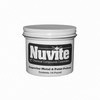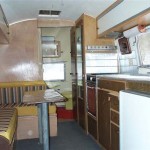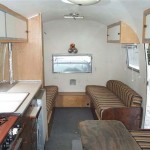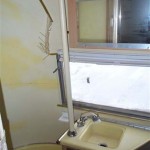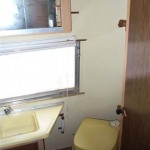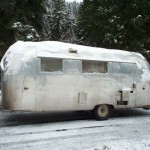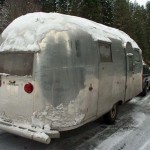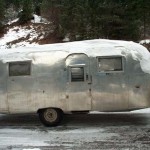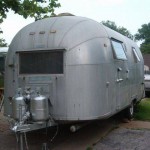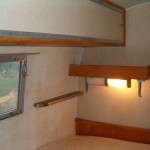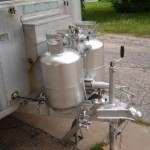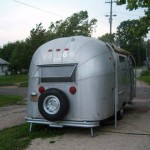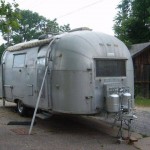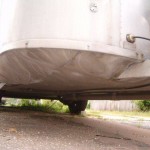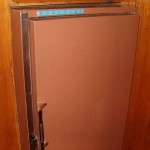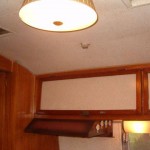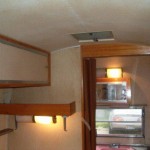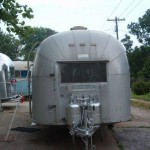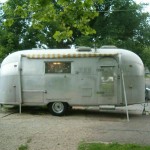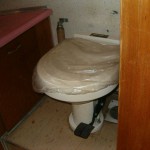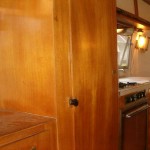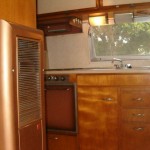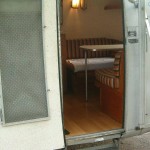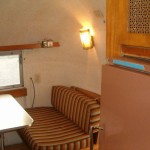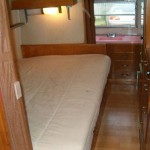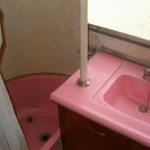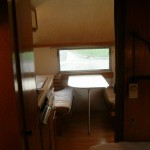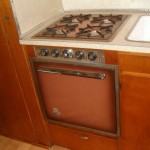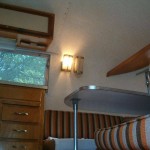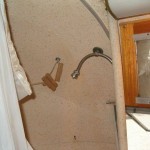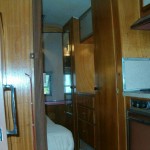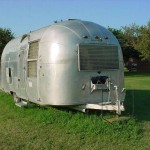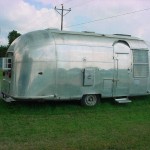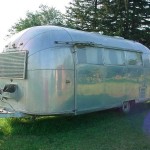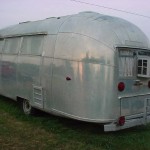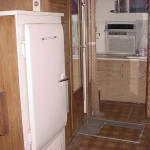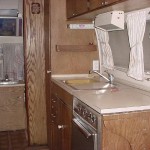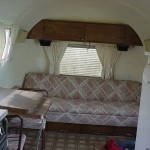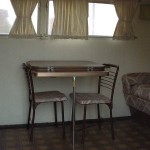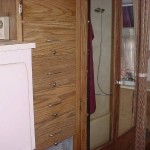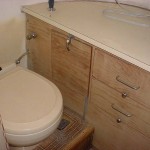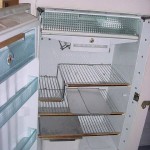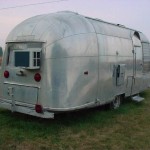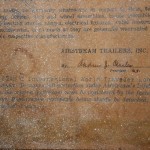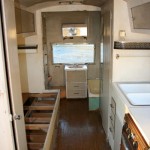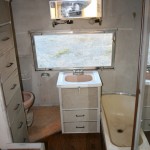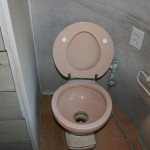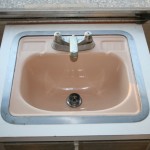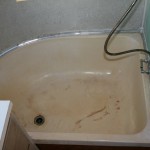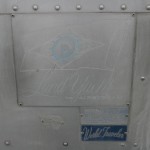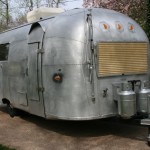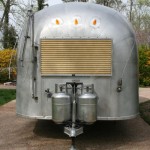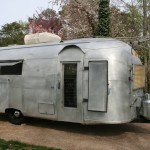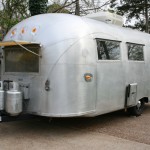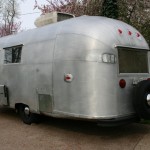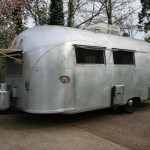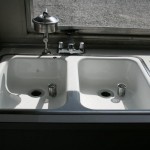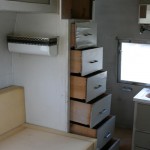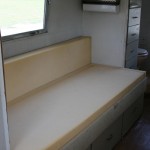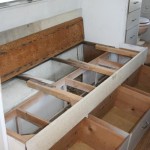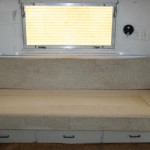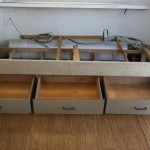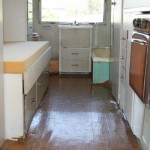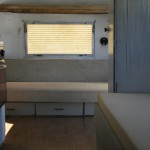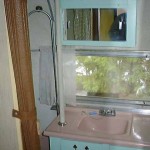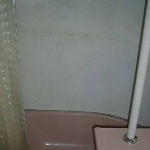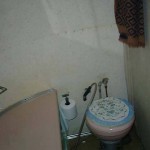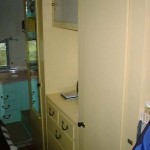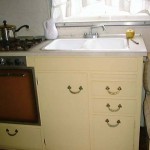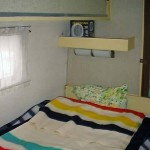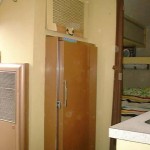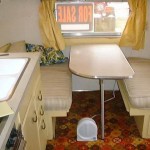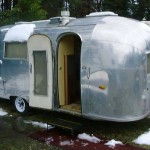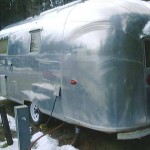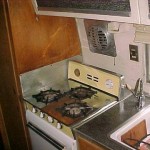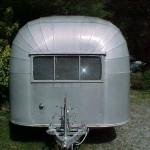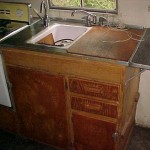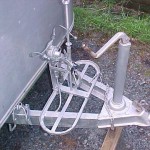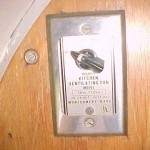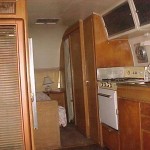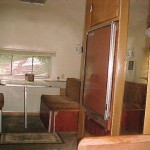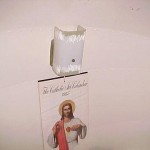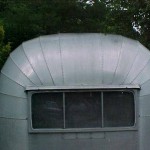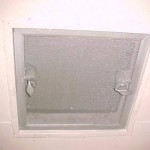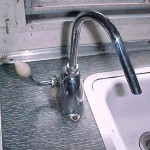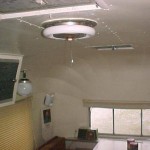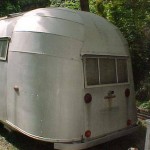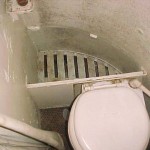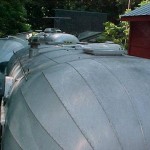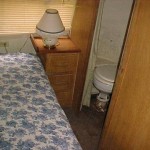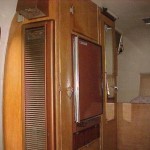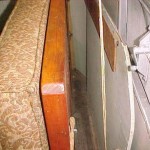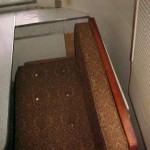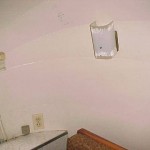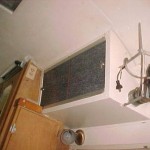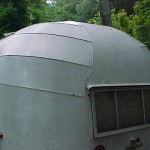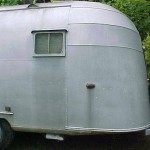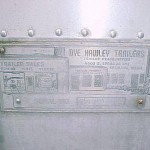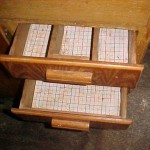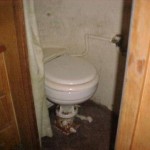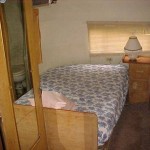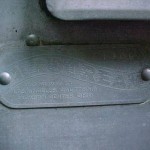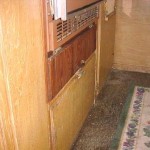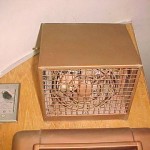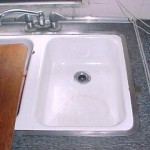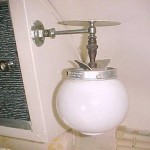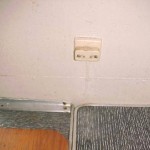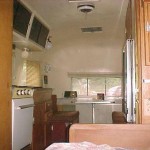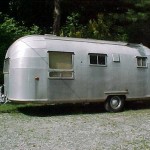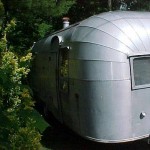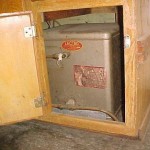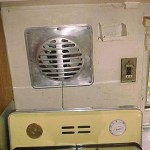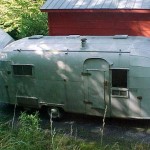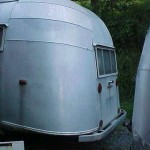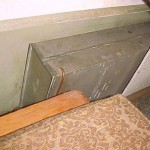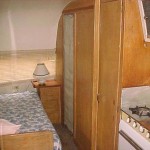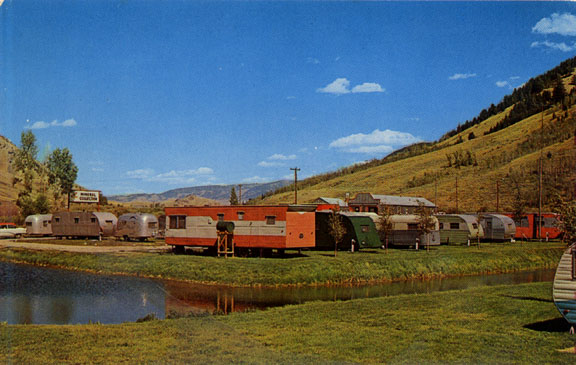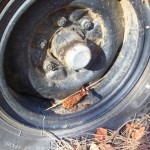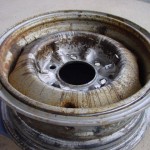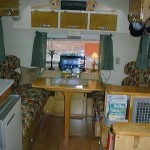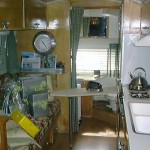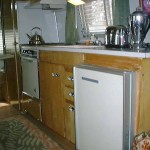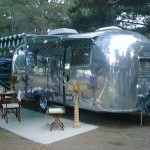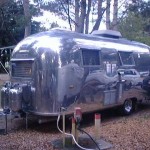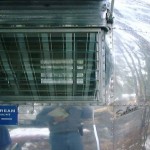Vintage Airstream Values
The question that always get asked by newcomers and existing owners alike is, what is an older Airstream worth? There is no “Bluebook” for older trailers, and the N.A.D.A. Guide stops at 20 years. The premise is that beyond that point, the trailer is fully depreciated and any value left is intrinsic. Such value is very subjective, and can vary by current economic conditions, the geographical region and the desire of the seller and buyer. What I hope to impart here is an awareness of the thought process behind how to arrive at a fair price between a willing seller and buyer. This way of arriving at a price is based on the Market Value (“comp” value) method of appraisal. In our case, we take the determined value of the trailer in a set condition (benchmark value), and then subtract the costs necessary to make the trailer under appraisal equal to that trailer benchmark.
The idea is simple, but it requires time becoming familiar with values and costs.
Step 1: Determine the benchmark price
To determine this benchmark value, watch the airstream.net, RV-Traderonline.com, ebaymotors.com, airstreamforums.com and airstreamcentral.com ads. Vintage trailers roughly fall into 3 categories: restored, average, & “as found” (see Table A). This is where it becomes important to not jump at the first Airstream you come across, waiting until you are familiar with what’s available out there. For the impatient, I’ve prepared a rough”guide” of Airstream prices (Table B). Couple words of caution:
Just because a price is listed in an ad doesn’t mean it sold for that price. I usually discount prices by 15% (for buyer counter offers) and don’t use obviously absurd prices. Prices will always be higher on ebay because you have greater exposure to a vast number of potential buyers with little effort required by both parties to initiate interest.
It is also human nature for people to understate what they bought something for, and to overstate what they sold something for. Take this into account when talking to folks about what a trailer sold for. Also, ebay prices can fool you. 1 in 5 sales fall through because the buyer backs out when they see the trailer, or never follows through. You have to watch for relists and feedback.
————
Test Case Example: What is the value of 1961 24′ Tradewind, routinely used each season, but with deferred items needing repair, and determined to be just worse than Average condition. Per our Table B below, the benchmark for an average condition 1960’s Tradewind is $5500. If your fine-tuned research has shown “that a 1961 Tradewind sells for more than a 1968 Tradewind on the West Coast in the middle of winter”, then use your value here.
Step 2: Apples to Apples……..
If you were looking at a fully “restored”, “average” or “as found” trailer for sale, your homework is done – you’ve solved the “what is it worth” equation. But what if the trailer is somewhere in between, as is the usual case? This is the second step, subtracting the cost of anticipated repairs from the benchmark value. Once again, in order to keep from paying too much, you have to do some research. How much does it cost to have something repaired, replaced or overhauled? I’ve provided a table of shortcuts (Table C), but for those items where a price is not listed, multiply what you would expect the repair to take by the shop labor rate and then estimate parts and materials. Study the links to suppliers and become familiar with parts costs. The key is to assign a value to items that will need to be repaired – it will all average out. This is also the time where it pays to inspect the trailer from front to back, or to have had it inspected by a mechanic or Airstream knowledgeable person. Not only should obvious items be looked at, but also the originality and finish should be scrutinized. It is amazing how fast restoration and repair costs can add up, even on items that appear to be OK at first glance- after all, you are dealing with items that are 25 to 55 years old.
————
This is where we now take our Tradewind example and adjust it for its shortcomings. Lets say it has a soft floor near the door, someone has installed a cheap plastic RV toilet, the cabinets have some water damage, the LP tanks are not current OPD, the trailer lights don’t work and the front skylight is a piece of plywood. Using the Table C, the total anticipated equalizing cost comes to $2200 in our example.
Step 3: Simple subtraction
Take the total equalizing fix-it cost from Step 2 above and subtract it from your benchmark value from Step 1. If you are in your right mind, this should be the price to pay for the trailer under scrutiny. But….it is very possible that you can end up with a price far below the asking price, or even a negative number! I call this the Airstream price/condition axiom. “The more perfect condition a trailer is in, with minimal deferred repairs and damage – the better the deal.” You will always come out money ahead by paying more up front and getting a well maintained Airstream in as good as condition as possible.
————
Using our Tradewind example, we subtract the adjustment estimate of $2200 from the benchmark value of $5500, arriving at a fair market value price of $3200. This is a realistic price for a ’60’s-early ’70’s Tradewind in just less than average condition.
Step 4: Labor of Love
What if your net adjusted price is less than, maybe even much less than the asking price? You have three options.
- Make a reasonable offer, or
- Run the other direction – there are plenty of Airstreams out there, or
- Evaluate the acquisition based on what price you place on convenience and how it meets the needs of what drove you to want a vintage Airstream in the first place. This could be such things as the interior condition not being important because you plan to build your own custom interior, to the other extreme of the importance of a completely original but poor condition interior. Also, what if you are able to do most of the work yourself, paying only for materials and parts? Here is where the therapeutic factor and satisfaction of restoration and rescue come into play. If you are able to adjust the repair costs in Step 2 downward by excluding labor, then doing so will result in some of the less fortunate trailers moving back into the positive region; it then becomes a “labor of love”, instead of making economic sense.
————
Using our Tradewind example again, let’s say the seller was asking $3500; you talk them down to $3200, leaving a spread of $700. The questions come down to:
- Is this exactly what I’ve been looking for?
- Have I looked at many Airstreams now, or is the first one that came along? Too many times buyers will buy the first trailer they come across, ignoring common sense and economics.
- Do I have the talent and time to realistically do some, if not all of the labor?
These types of questions will or will not justify the difference between a sensible buy and the price of convenience.
A note about “For Sale” ad prices
The above exercise brings up the question, how did those sellers arrive at their price in the first place?
Sellers probably determined their asking price by doing the same thing you should be doing, studying what other trailers are listed for, and then setting their price higher or lower based on economic need and how they feel their trailer stacks up to other examples.
This is also where you can pick up “deals” – unwitting sellers setting low asking prices unaware of current market values.
Caution: if you see a trailer get relisted in ads, that is a good indication that the seller did not get their asking price the first time, and that first sale price should be not be counted.
Table A – Condition
“Average” Condition
The definition of “average condition” is:
- The shell should have no more than one or two very small shallow dents, and no punctures or scrapes.
- It is most likely not polished, and if the clearcoat is still on it, it may be peeling in locations.
- All of the original exterior vents and doors will be present, and the windows should not be broken and should have working openers and close securely.
- The interior furnishings (cabinets, fixtures, appliances & linings) should be 90% or more original and all in good condition.
- The soft goods (curtains, mattresses & upholstery) may be worn originals to just recently replaced. This is the one area that makes no difference to value, since most everyone will replace these during a restoration to suit.
- All the original appliances such as heater, water heater, A/C and refrigerator work. If replaced, they should be of appropriate size and design.
- The electrical, LPG and water systems should all be fully functional.
- The tires, including the spare, aren’t cracked from UV damage, and the brakes are in good working order. The owner should have invoices showing fairly recent shock absorber replacement and wheel bearing repacking.
- External features such as utility connections and servicing ports are fully functional.
- The sub-floor shall be solid throughout with no soft spots. It should have the original or replacement floor covering in good unstained condition.
- Outdated items such as hydraulic brakes and split rim wheels may or may not have been replaced.
- The trailer has seen regular annual use and care.
These are also the types of questions you can ask a seller to determine the condition of a trailer.
“As Found” Condition
The definition of an “as found” is a trailer having some of the following:
- Larger or numerous dents, punctures or scrapes.
- Missing some of the exterior vents, doors or windows.
- Interior furnishings and features less than 75% original, or are water damaged.
- Some of the original appliances such as furnace, water heater, stove and refrigerator are missing.
- The electrical, LPG and water systems aren’t functional.
- The tires, including the spare, are cracked from UV damage, and the condition of the axle components are unknown
- External features such as utility connections and servicing ports are damaged or missing.
- The subfloor has soft spots or rot damage.
- The cabinetry or interior walls have been painted over in other than original finishes.
- The trailer hasn’t been used or maintained in many years.
- Modifications may have been done to the layout or systems.
Most of the trailers that end up for sale fall into this category.
“Restored” Condition
The Restored term is often misused (see “Renovated” condition below). Most Airstreams are in a state of “undergoing renovation or restoration”. Truly Restored means:
Interior
- The interior layout is original, or is typical of the period and Airstream design (no computer desk instead of sofas, no wet bars, moon roofs or kitty doors).
- Interior components are aesthetically original (may have improved function or internals).
- Interior components and appliances have been cleaned, repaired and restored to a serviceable condition with no damage or degradation, using appropriate materials and methods.
- Unique features, appliances & fixtures to that model and year should still be present, (LPG Lamps, Service Control Centers, Byam Burners and Panel Ray heaters are examples).
- Replacements or additions to appliances and fixtures should have been done with correct period units, or with modern units installed in such a way they blend into the layout.
- Cabinetry, shrouds and linings should be original or replaced using period materials and methods.
- Cabinetry finish should be applied as per the original (painted, varnished or oiled wood). Interior wall linings should be as per original – green/tan paint (’40’s), Zolatone Paint (’52+) or Vinyl lining (’70’s).
- Upholstery and soft-goods should be clean good condition and in period cloth or neutral/earth tones.
- Any subfloor rot has been removed and repaired or replaced. Floor Covering should be clean and solid and from appropriate materials. Carpeting, Linoleum, or vinyl tiles are the norm.
- The plumbing system should be complete with no leaks. The water system should supply water from an onboard tank through either a hand pump, demand pump or compressor as appropriate. The street water system should supply water to all the appropriate fixtures.
- Wiring should be in a safe condition. Any modifications should be to code. Electrical fixtures should be original or period reproductions.
- Potable water tanks should have been cleaned & disinfected. Any new tanks should be installed in an unobtrusive manner.
- Toilet should be original or equivalent replacement (porcelain for porcelain, etc.)
- Any new black or gray water tanks should be installed in an unobtrusive manner.
Exterior
- Any major dents, scrapes and punctures have been removed or repaired, minor shallow dents are OK (small hail dents or bumps).
- The exterior skin has been polished within the last few years. It does not have to be clear-coated. The panel edge seams and openings have bean neatly sealed with Parbond, Vulkem or similar sealant.
- Belly Skin is complete and secure.
- The original window weather-stripping is tight, or has been correctly replaced.
- Window openers all work. All screens are present & in good condition.
- Door works smoothly, hinge is in good condition, handles, locks & latches are in good working order, and are original or appropriate replacements.
- Roof vent mechanisms are working originals or appropriate looking replacements.
- Running gear (brakes, tires, bearings, shocks, springs) are in good working order and condition. Should have records showing servicing dates within the last 4 years. Wheels (rims) are appropriate with hubcaps (baby moon) or pie-plate hubcaps or spoked aluminum for the later models. It is OK to have the original split rim wheels replaced. It is OK to have original hydraulic brakes converted to electric brakes. It is preferable to keep the original hydraulic hardware in place.
- LPG tanks have OPD’s and are polished aluminum or silver painted steel.
- All exterior vent fittings are original or appropriate replacements.
- Exterior lamps are working originals or newer historical reproductions. Trailer wiring works, and the wire harness is in good condition.
- All exterior placards & nameplates should be present and have been repainted if necessary.
- Tongue and bumper shouldn’t have any exposed rust and should be painted silver.
- Any attached awnings are ZipDee or A&E, and are in good working order. Extra points for original or reproduction free-standing pole/staked awnings.
- Step should be original, painted silver, and in good working condition.
“Renovated” Condition
This defines trailers that have been fixed up, but not with intentions of maintaining originality (see Table D). They are of the same functional condition as Restored, but don’t meet the originality requirements. Often these are used as a low cost family camper, specialized applications (live-in, office, etc), or are rescues of previously neglected trailers. They usually have layouts not found on the original, or have non-period cabinetry and finishes. Appliances and fixtures are usually modernized. The interior usually has been custom painted (non Airstream original). Valuation usually falls somewhere between “Restored” and “As Found”. How far is determined by how close the buyer and sellers preferences and tastes are.
“Custom Renovations” are classified as completed re-dos of an Airstream from the ground up like that from Vintage-Vacations and other full-time commercial restoration outfits – and can run from the high $30K’s to over $80K. Such re-dos rarely recover the initial cost of the mod when resold. Customized trailers are meant just for the satisfaction of the customer. Once again, when buying used, it will be the trailer that is in the best condition that will always be the best deal, no matter the price. If you can purchase one of these trailers, you will always be money ahead vs. paying to have it done on your own trailer.
Table B – Vintage Price guide
Every collectable book you open has a price guide in the back, so why not a website? They are not “official” or gospel, just the authors take on what he or she sees as ballpark prices for items. That sums up this table, and is intended to be just a guide for those who haven’t formed their own opinion yet of values based on experience. This price guide is based on adjusted sale ad asking prices and known sales from talking to buyers/sellers. Higher prices are summertime West Coast prices. Make sure to understand the condition criteria. Most Airstreams that are sold fall between “As Found” and Average condition. With that said:
CAUTION!! Do not use the values listed here until you have read and understand the text relating to condition and the items that influence price. Too many people are automatically assuming their trailer is in Average or Restored condition. Restored trailers are very rare, and unless a trailer has been well maintained and used, it will not be Average condition.
| Era | Size/Model | "As Found"
(See Table A) | "Average" Condition
(See Table A) | Restored**
(See Table A) |
Post War1940's
Pipe Frames | | | |
|
| 16' Wee Wind | $2000 - $5000 | $7000 - $9000 | $15,800 - $18000 |
| 18'-19' Trailwind & Clipper | $1100 - $2900 | $5000 - $9500 | * |
| 22' Liner | $1100 - $1800 | $3800 - $7500 | * |
The '50's| (1951-1960) | | | |
|
| 15' Cruisette | $2100 - $3800 | $5400 - $7000 | * |
| 16' Bubble | $2200 - $3290 | $5500 - $8800 | $13800 - $20100 |
| 17' Clipper | $1900 - $2800 | $3900 - $7500 | * |
| 16' Pacer | $2500 - $4800 | $5500 - $8800 | $13800 - $18500 |
| 18' Globetrotter / Caravel / Traveler / Pacer / Other | $1100 - $3100 | $4200 - $8200 | $12500 - $18200 |
| 21'-22' Safari / Flying Cloud / Caravanner / Custom | $1100 - $4200 | $5100 - $7800 | $13500 - $19500 |
| 24' Tradewind (1959+) | $1200 - $2800 | $3800 - $7800 | $11600 - $18800 |
| 26' Cruiser / Overlander
| $1000 - $2500 | $3900 - $7200 | $12000 - $18700 |
| 28' Ambassador | $1000 - $1900 | $3200 - $7000 | $10500 - $18900 |
| 30' Liner / Sovereign | $1000 - $1800 | $3200 - $6000 | $11000 - $18600 |
| The '60's | (1961-1968) | | | |
| 16' Bambi | $1900 - $3800 | $5000 - $8800 | $13700 - $20200 |
| 17' Bambi II / Caravel | $2000 - $3800 | $5200 - $8900 | $12900 - $17800 |
| 19'-20' Globetrotter | $1600 - $2900 | $4400 - $8600 | $12600 - $17400 |
| 22' Safari / Flying Cloud / Caravanner | $1000 - $2500 | $4700 - $8200 | $11900 - $17000 |
| 24' Tradewind | $1100 - $2800 | $3900 - $7000 | $10900 - $16500 |
| 26' Overlander | $1000 - $2000 | $3800 - $6500 | $10800 - $16000 |
| 28' Ambassador | $1000 - $1900 | $3500 - $6000 | $11000 - $16100 |
| 30' Sovereign | $900 - $1800 | $3400 - $6500 | $11000 - $17000 |
| The '70's | (1969-1981) | | | |
| 18' Caravel | $1900 - $3800 | $5700 - $9100 | $14800 - $17600 |
| 21' Globetrotter | $1500 - $3500 | $4800 - $8300 | $11000 - $16800 |
| 23' Safari / Caravanner | $1200 - $2700 | $4670 - $7700 | $10900 - $16300 |
| 25' Tradewind | $1100 - $2800 | $4600 - $7800 | $10500 - $16100 |
| 27' Overlander | $1200 - $2300 | $4200 - $7700 | $10300 - $16500 |
| 29' Ambassador | $1700 - $2300 | $4100 - $7500 | $10300 - $16400 |
| 31' Sovereign | $1800 - $2400 | $4100 - $8500 | $10200 - $16900 |
| 31' Excella 500 | $2200 - $3500 | $4600 - $9100 | $10700 - $17100 |
| | * Too few known sales to determine |
Price Trends and “Value”
In the above chart you will notice a few things:
- Current Market Trends (June 2010). Prices have been in turmoil the last 32 months. It may be that most used trailers are bought using cash or equity loans on people’s homes, both of which have been in short supply since the housing meltdown. On the for-sale sites, many Airstreams are going unsold at their asking prices, and eBay prices are not meeting reserves in many cases for nice trailers. As we got closer to 2008 winter and again in 2009, the number of trailers being offered for sale did not increase as it has in the past. With prices down in general, it may be that folks realize that the days of ever increasing prices (making a quick buck) are over for awhile, or are going to hold on to them and wait it out. We’ll keep an eye on the market this the 2010 selling season and look for changes in trends or to prices ranges. Prices have dropped remarkably over the last 3 years on larger trailers, especially those in less than ready to use condition. This may be attributed to higher gas prices, but may be even more related to the rise in interest rates and the reduction in the use of home equity loans and refinancing – the prime source of funds to buy and fix up a used trailer like an Airstream. It may also be the eBay crowd has found out just how much work and cost is required to get an older trailer usable again. Many sellers are also getting sneaky by over classifying the condition of their trailers, so buyer beware.
- Prior Market trends. Prices for Airstreams rocketed upwards dramatically in the mid to late 1990’s, possibly owing to the rise of the internet and the ability to share information and find for-sale units outside of your local area. Prices then cooled off in the 2000 to 2004 timeframe as the economy cooled, except for small trailers, which have continued to slowly rise, especially those in very good condition. In 2005, prices in general had started rising again until the 2008-2010 gas/interest rate/equity loan issues. Ebay prices have actually stabilized over the last few years – maybe owing to the wising up of buyers on the amount of work and money it takes to fix up one of these diamonds in the rough. What is of note is the number of retreads you see on eBay, trailers that sold on eBay just a few years prior, but now back on the auction block in a little worse condition, with some interior parts disassembled, or with a half-hearted attempt at polishing a section of the trailer accomplished.
- “As Found” prices rise as the trailer age gets newer. This does not mean necessarily they are worth more, it is because they are less likely to be found in as overall poor as condition as the earlier year models.
- 1970’s Restored values are not as much as ’50’s & ’60’s models. This is because there are very few Restored examples, as they have not deteriorated enough to need restoring – most are still in an arrested state of decline at worst. This may change with time.
- Restored prices are substantially higher than Average condition prices. **Restored or renovated trailers are rare, and are just a small percentage of the population. It takes a lot of time and money to make a 25-55 year old trailer like new. Most every day usable Airstreams will fall somewhere in the high Average value range.
- Values top out in the $18K area. It is real hard to justify anything higher. If someone spent $2000 on a poor condition trailer and puts $25,000 into it….sorry, it comes back to my axiom of better condition trailers are the better value for the buyer.
- Truly restored Airstreams rarely come up for sale – as noted earlier, most trailers advertised are usually “as found”, or are “undergoing renovation”.
- When you get into the $10,000 to $18,000 range, each system must be in perfect working order, the structure has been gone through and repaired, all missing parts repaired or replaced, all surfaces are cleaned & ready to go, the trailer polished, and all soft goods are replaced – in other words “like new condition – ready to use, but using the old fixtures & materials”.
- Another maximum limit is what new “equivalents” sell for. In the case of the shorter trailers, the 1998+ Bambi’s can be had for $12,000 used in like-new condition, and new Bambi’s and 22 footers are about $26K-$36K – that sets an upper limit that is unlikely to be crossed.
- Another influence is new SOB’s (Some Other Brand). Conventional 17′-25′ travel trailers can be had for $14,000-$19,000 new – another price factor.
- Rarely can a seller get their cost out of a completely restored or customized trailer. This comes back to the best values for buyers are the trailers in the best condition.
- With the right market, with a small (Globetrotter & smaller) trailer completely restored & polished, the limit is about $19,000-$21,000 (Bambi’s included). Everything else is downhill from there. Large older trailers (Ambassadors & larger, Overlander’s to some degree) seem to attract the “park it” or “live in it” set, and there historically has not as much fevered restoration or nostalgia interest. That is changing lately, as many people are remodeling these larger Airstreams for use as cabins and guest houses.
- Prices are higher in the Western US. Be it because of the weather, camping & travel opportunities, too much extra money, or whatever – it’s a fact of life.
- Smaller trailers will usually bring more than larger trailers of the same vintage. This is because a smaller trailer is what is being sought out by present day weekend campers and travelers, and restoration of a small trailer is less a formidable task. Small trailers are equated with being easy to tow and easy to maintain. There is also a certain “cute factor” involved. Even Airstream has caught onto this fact with the introduction and success of the modern Bambi.
- As recently as Oct 2002, a 1955 Flying Cloud that had been stored in a barn since 1960 fetched $23,000 at auction – in untested but complete original condition.
- The recent focus on Airstream by such mainstream shows such as the 10 part restoration of a 1970 Overlander by the DIY Network has boosted the desirability of the longer trailers and 1970’s era trailers. Also, many people are becoming more savvy about the condition of the floors, and the amount of work it takes to restore the older trailers.
- Don’t forget to factor in the cost of obtaining an Airstream when buying. Many buyers, thanks to the internet and ebay, have bought a trailer, only to find it cost $3000-$4000 to ship it across the US. Even in state deliveries can run $500+.
What’s this all mean? Condition and desirability. Highest prices for those in ready to roll restored condition, bought by people who don’t have the time or skills to do one themselves. Higher prices for good original condition trailers for people interested in restoring, average prices for neglected mostly original examples, and bargain basement prices for messed up and butchered trailers. The smaller the trailer, the higher the interest and price per foot.
Table C – Estimating cost of common repairs
| Item | Cost* | Item | Cost* |
| Polish external skin - per foot of total trailer length | $110 | Replace Refrigerator | $900-$1600 |
| Strip Clear Coat - per foot of total trailer length | $50 | Repair Refrigerator | $250 |
| Wheels - steel / aluminum | $38 / $160 | Repair / Replace HW Heater | $80 / $240 |
| Tires - ea. | $78 - $120 | Repair / Replace Air Conditioner | $80-$160 /
$360-$600 |
| Brakes - repair / plates | $50 / $110 | Replace Toilet - porcelain | $280 |
| Shocks - ea. | $24 | Window Opener/seals, per window | $60 |
| New Axle | $780 | Skylight, 14 x 25 | $120 |
| New LP tank OPD valves, ea. | $45 | Zolatone Paint Interior | $480 |
| Dent removal - end cap (per dent) | $1180 | Cushions, sofa - ea | $320 |
| Flooring, carpet, vinyl, linoleum - sq ft | $3 - $12 | Mattress, bed | $210 |
| LPG Tanks, aluminum - ea. | $130 | Repair & Gelcoat Fiberglass bathroom | $200-$500 |
| Repair / Replace Stove / Range | $100 / $240 | Replace Water Pump | $60 |
| Replace Faucet | $90 - $120 | Replace Curtains | $300 - $600 |
| Replace Upholstery | $300 - $900 | Replace Flooring (vinyl) | $500 |
| Electric Tongue Jack | $220 | New Propane Tanks, ea | $165 |
| LPG Regulator | $60 | Replace Screens | $120 |
| Rock Guard | $100-$325 | Replace Floor, Material Only, per linear foot | $25 |
| Tongue Jack, manual | $75 | '66-'68 Corning Windows, Material Only, EA | $220-$260 |
| Overhaul Windows, Parts only - ea | $45 | Replace Belly Skin, Material Only, per linear foot | $19 |
| RV Shop Labor for repairs per hour | $50 - $65 | Bits & Pieces - Add up in a hurry!! | $$$$$$$ |
| Holding Tanks w/ Fittings | $240 ea. | | |
| *Includes labor. These costs will vary widely by locality and the quality of the material/product used, and are for rough order of magnitude estimating. |
Table D – Airstream Originality
I equate this to a little bit of history.
In the late 1920’s and early 1930’s, big ornate radio consoles were made by the tens of thousands. Post WWII brought about shrinking of radio size and improvement of the reception & operation. By the thousands the console radios were made into linen cabinets, spice racks, had their legs cut off or had their workings modified or replaced. Nobody thought otherwise – there were “plenty”, and these appliances were “outdated”. Today a Sparton Equisone or Stromberg-Carlson set can fetch from $800 to $1100, but one modified or without the original innards can be had for less than $100.
The same can apply to Airstreams.
There are plenty, but as each year passes, more and more bite the dust through neglect, export, loss and “modifications”. Let’s face it, it is the old-time quality and period looks that attract people to vintage Airstreams rather than a new trailer or another brand/type. I have been following Airstream sales closely for over 11 years now, and notice that a vintage unit in original and undamaged condition will generate quick activity and a sale. As many of you know, we were looking for another 1950’s 22 footer. We came across the trail of 5 over the course of a few months. 3 were in fairly original condition with few mods – and each had been snapped up almost immediately. The other 2 were still for sale months later.
But you say your 1960’s or 1970’s trailer is not in that category? No one will care if it is original? “There are 100’s of these trailers?”, and so on?. That’s what the owners of those old radios or the 1950’s trailers we looked at thought, too. For whatever reason that we who lived through the era’s can’t explain, the 1960 & 1970 interiors will soon be found fascinating, too. That doesn’t mean that the internals can’t be improved, or additions/modifications can’t be made using period materials & methods. Shoot, each Airstream was custom in it’s own way. For those who just have to have a modern or super-custom interior, there are many stripped out or heavily modified trailers out there, just ready for such a make-over……and they are much cheaper too.
That should be a hint right there….





